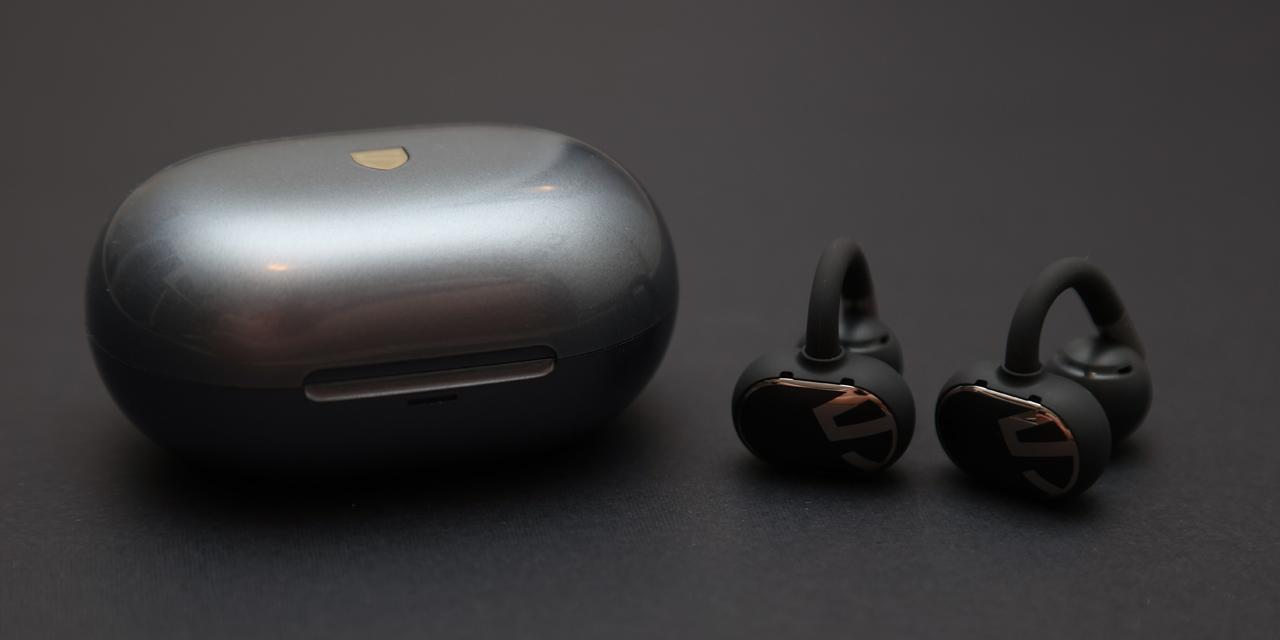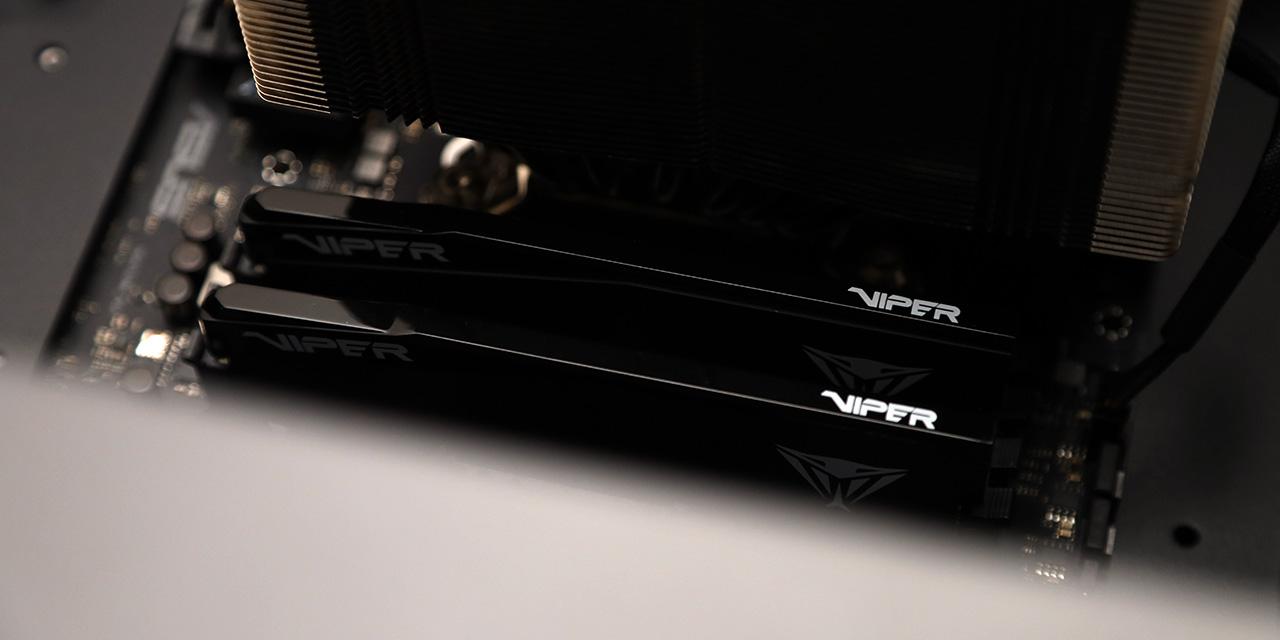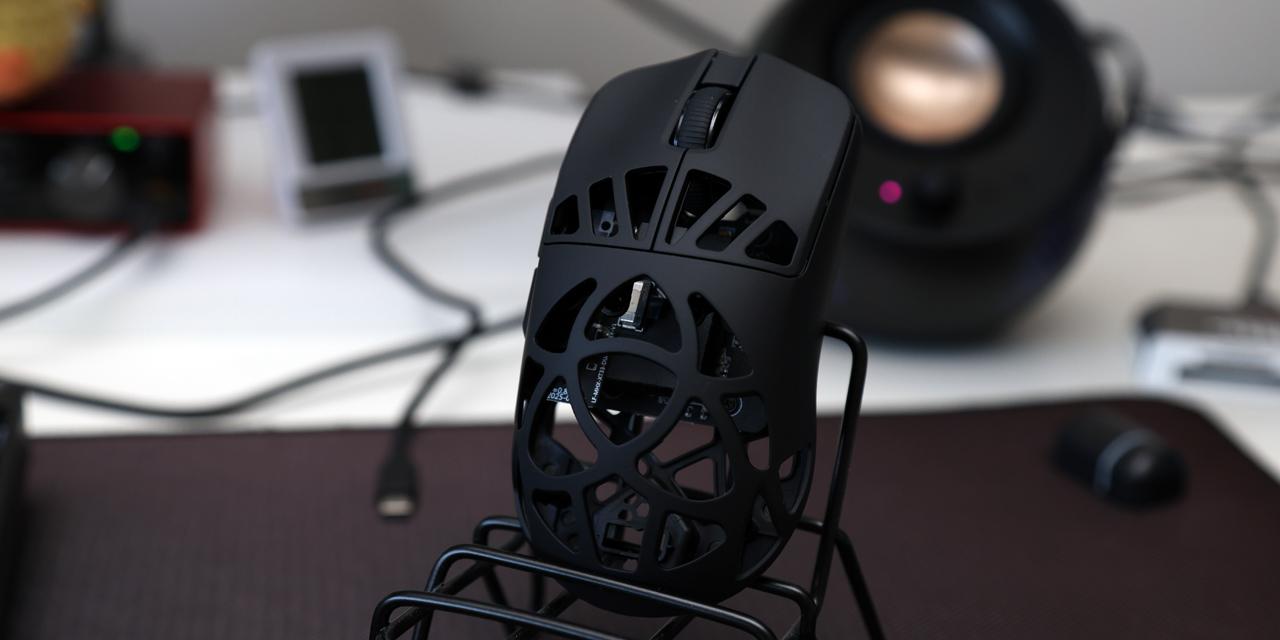Page 2 - A Closer Look - Hardware and Software

We have seen many light mice previously, and the Epomaker Carbon X looks like the early examples of ultralight mice. This includes the holes all over the shell. These holes are found on the whole body and on the mouse buttons. This exposes the internal components of the Carbon X, but also shows how minimal they have made the shell. On the other hand, unlike ultralight mice like Cooler Master MM711, the Carbon X has much larger holes. Due to these large holes, I would tell you to avoid eating or drinking near your mouse, as the Carbon X is not protected from any elements. These holes are also found on the bottom of the mouse, as you will see shortly, which means dust can accumulate in these areas after some time. The holes are likely to grab most of your attention, as the rest of the Carbon X is clean in look. The black shell is finished with a matte surface and slightly grippy surface. It resists showing handling marks, although overtly greasy fingers will leave their mark on the Carbon X.

The Epomaker Carbon X measures 118mm in length, 62.2mm in width, and 39.6mm in peak height. This is similar in sizing to other mice I have tested like the MM712. The shape is curved with a peak near the middle of the body. Its curve is consistent to fit into the user's hand effortlessly. This is intended to be ultra-light, but I was still surprised at its 45g, which is both lighter than the specifications and any other mouse I have used. The closest I have seen is the Turtle Beach Burst II Air at 47g. This low number is due to the Epomaker Carbon X's carbon fiber construction. Carbon fiber is known to be light yet strong. The weight is balanced towards the middle of the mouse where it lines up with the sensor. The shape of the Carbon X's body is ambidextrous in shape, but its button placement is not. Overall, build quality is surprisingly solid, as there is little to no flex in the body. Even if you exert an abnormal amount of force on a single frame piece, I did not see much give or flexing.

From this left perspective, you can see majority of the buttons on the Epomaker Carbon X. The primary left and right buttons are separated from each other and the rest of the body. Each of them is sloped towards the middle to ensure the user's fingers rest in the middle of the buttons. Underneath, we have optical Omron switches, although the exact model is not specified. The buttons’ response and weighting feel good, and it strikes a good balance between being too easy or being too hard to actuate. The scroll wheel is a notched wheel. In between the primary buttons, there is a very slim slit for a multicolor LED. This is used to indicate battery or DPI status, depending on what you prefer. As for the side, we have standard forward and back buttons. These feel quite good to press, have a bit more travel than the primary buttons, and do not feel spongy when bottoming out. As for placement, they are located right above my thumb and are easy to access while remaining out of the way for accidental presses.

The rest of the buttons on the Epomaker Carbon X can be found at the bottom of the mouse along with the optical sensor. There are four primary areas of PTFE feet to keep the mouse gliding on any surface. An additional Teflon ring around the sensor can be seen to prevent this area from catching onto your surface. The sensor in question is the PixArt PAW3950, a high-end sensor for wireless mice. The recently reviewed Turtle Beach Burst II Pro uses a sensor that is based on this one too. This offers a sensitivity range of 50 to 30000DPI in 50DPI increments. The sensor promises 750 inches per second tracking and acceleration of up to 50G. 1000Hz polling rate is standard, but you can increase this to 2000, 4000, and 8000Hz, or decrease it down to 500, 250, or 125Hz. Over Bluetooth, this polling rate is limited to 125Hz. Otherwise, there is no sensor or lens rattle with the Carbon X.
Moving on, the bottom has a few other inputs and slots. The large opening on the bottom with a rectangular cutout looks like it would fit a USB dongle, although the one included does not fit here. Epomaker is probably sharing this shell design with other mice. On the left side, there is a three-position switch for users to change the different operating modes. The top position is for use with the wireless USB dongle over 2.4GHz, the middle is for a wired USB connection, and the bottom is for Bluetooth connection. On the right, there is a button to cycle through DPI settings on the fly. These preset sensitivity steps can be configured in the utility, as you will see shortly. At the front, there is an opening for a USB Type-C input. This is used for wired operation or charging the Carbon X.

Like many wireless mice, the Epomaker Carbon X can be used with or without wires. As such, we have a braided USB Type-C to Type-A cable included. However, I have been spoiled by better weaved cables, as this one is much more rigid. You will feel the cable dragging along when you use it in wired operation, which gets annoying over time. Even if this is primarily meant to be used as a wireless mouse, I think Epomaker should have included a more flexible cable for use in a pinch. An extra set of four skates are also included if you need to replace the ones on the bottom of the Carbon X.
The last included accessory is the USB dongle for connection over the 2.4GHz frequency. It is a bit chunkier than you might expect, but there is a ring LED light around it for status updates. Epomaker offers two ways to connect wirelessly, including Bluetooth and with the dongle. A 300mAh battery is inside to keep the Carbon X powered. Epomaker does not provide any estimates for its battery life, but when I was using the mouse with the wireless adapter, I could last around fourteen days before needing to recharge the mouse. This was with the default 1000Hz polling, and I expect the battery to drain faster when you increase the reporting frequency. The Carbon X is quite aggressive in its power savings measures, as the mouse goes to sleep after not using it within eleven seconds of its last movement. I have not seen anything configured to fall asleep so quickly, and I am sure many humans wish they could be like this, haha. It also wakes up quickly from sleep, which is good, as I never had to turn this off manually unless I was switching it to wired operation. The USB dongle has a translucent ring around the body to glow assorted colors based on the battery status. This includes Green, Blue, Yellow, and Red for highest to lowest battery life. When the mouse is plugged in and charging, the slim LED light on the top will indicate charging status.

As we have seen from most Epomaker products, the Carbon X can be configured with a webpage utility, which is called Control HUB WEB. You should make sure you are using a Chromium based browser, such as Google Chrome or Microsoft Edge, as I could not get the mouse recognized in Mozilla Firefox. All the different menus are selected with the top four icons. The first page is meant to configure the inputs of the Carbon X, which includes all the top buttons but not the one underneath. This lets you save the settings to one of four different profiles, although there is no default button to cycle through profiles. You can also configure the debounce time, export or import profiles, or reset the Carbon X to its default settings.

On the second menu, all the different operation settings are available here, including the different DPI sensitivities and steps. By default, there are seven enabled, but this can be reduced. You can also change the polling rate, lift off distance, ripple control for correcting jitter, angle snapping, and motion sync for smoothing correction. There are a few other settings such as mode selection and a checkbox for highest performance, although it is not clear what these do. Finally, you can change the lighting to show the DPI effect if you desire.
The next page is marked with an "M" for recording macros. Finally, the cogwheel is for other settings like re-pairing your mouse with the dongle or changing the sleep time of the mouse. Curiously, I could never get the sleep time to change, as it always went to sleep after eleven seconds of not moving the mouse. There is a long-distance mode here for using the mouse further away from the dongle, although this consumes more power. Overall, the utility is usable, but there are several configuration options that could have been better clarified in its description.
Page Index
1. Introduction, Packaging, Specifications
2. A Closer Look - Hardware and Software
3. Subjective Performance Tests
4. Conclusion





